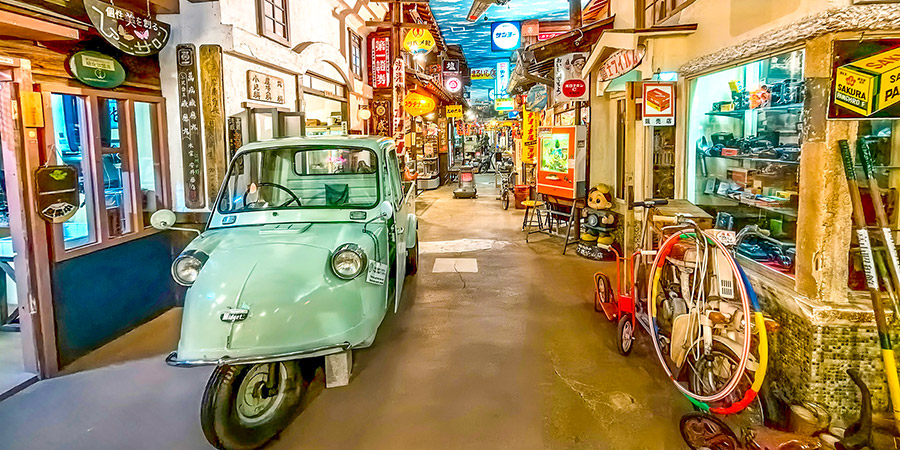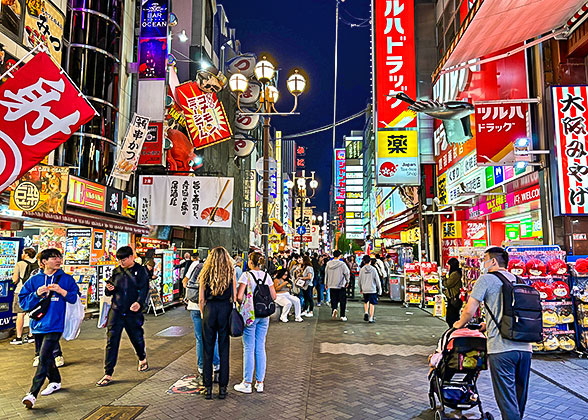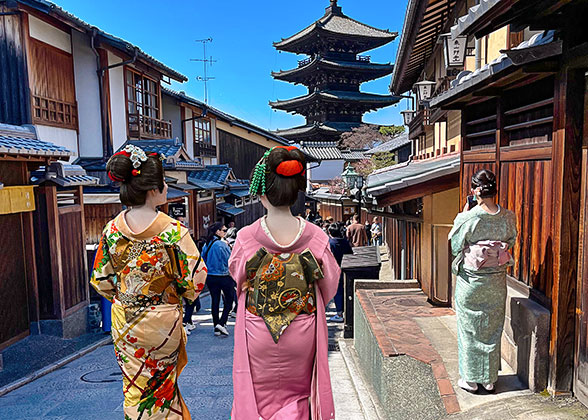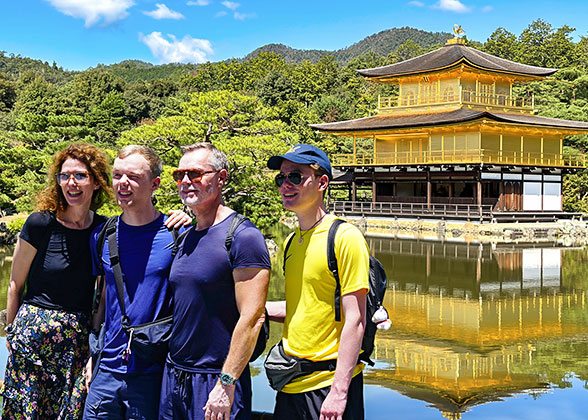Takayama Showa Kan Museum
Takayama Showa Kan Museum is a private museum presenting Japanese life in the Showa Period (1926 – 1989). It exhibits about 20 life scenes back then, such as residences with two floors, streets, a police office, a hair salon, and a cinema. All the life scenes are decorated with life items produced in the last century, which were continually collected by the Museum’s owner. For example, in the hair salon, you can see the real old machine to perm hair; in the audio shop, the glass cabinet is placed with real vinyl and CDs of singers once popular in the last century, like Miyuki Nakajima and Deng Lijun. Generally, for anyone who wants to learn about Japanese life in the 20th century, Takayama Showa Kan Museum can never be missed. In addition, there is a branch museum in Yufuin. Go to visit it too if you have enough time.

|
Recommended Life Scenes to See in Takayama Showa Kan Museum
1. Traditional Residence

Kid Bedroom
|
2. The Hospital
The real surgery tools, machines, and medical books would make you feel like entering a real hospital. In addition, in this scene, you can even smell disinfectant water, which may give visitors an olfactory shock, so for anyone who dislikes that smell, skip the scene.3. The Classroom
This scene displays how Japanese classrooms were around 1970s. The low chairs and desks designed for students, the outdated schoolbags hung on the back of the chairs, the unerased writings on the blackboard, the old typewriter, the organ specimens, and students’ lunch boxes, all of these make visitors feel that the classroom is still in use. In addition, most items displayed are allowed to be touched.

Classroom
|
4. Camera Equipment Shop
Shutterbugs must like this scene as it exhibits various vintage video cameras of different brands like Fujifilm.
|
|
|
Top Things to Do in Takayama Showa Kan Museum
1. Take Candid Photos
The Museum is very suitable for taking photos due to its retro style. Many items and furniture in the Museum are allowed for visitors to touch or sit on. In addition, visitors can try on the old-fashioned clothes displayed.
|
|
|
2. See a Movie in the Cinema
In addition to the old cartoons and programs played on the televisions, visitors can also watch a movie in the cinema of the Museum. Not only ancient films, but modern ones would also be played, such as Beauty and Beast. Sitting in a cinema styled with the 20th century while watching a movie produced in the 21st century might give you a sense of staggered time.3. Play Super Mario Games in the Old Game Machine
For many people born in the last century, Super Mario Game is an important part of their childhood. Visitors can recall their childhood here as the Museum also collects some old Family Computers of Subor on which you can play Super Mario. There are also some game machines that children may like on the street scene. In addition, the Museum has a toy shop scene, which children may like, as Barbie dolls of the old style, traditional Japanese masks, toy cars, Doraemon, Ultraman toys, and others once extremely popular in the last century fill the shop.
|
|
|
Ticket Price
1,000 yenOpening Hours
10:00 a.m. – 5:00 p.m.How to Get There
1. By Takayama Main Line
Take Takayama Main Line Limited Express Wide View Hida and get off at Takayama Station. Later, you can either walk directly to the Museum in 15 minutes or take a busWalking
First, walk eastward to the Hirokoji Street, turn south and walk along the Street for 60 meters (65 yards); turn east and continually walk along the Street for 400 meters (435 yards); turn north at the fifth crossroads and walk for 55 meters (60 yards); turn east at the first T-road, and walk for 75 meters (85 yards); turn east at the first crossroad, walk for 160 meters (175 yards), and you can reach 158 Road; walk eastward along the Road for 300 meters (330 yards), turn left, walk for 30 meters (35 yards), and the Museum is on your left.Bus
After getting off at Takayama Station, walk for 4 minutes to Takayama Nohi Bus Center, take H01 Bus of Hirayu Shihotaka Line, and get off at Furuimachinami Guchi. Last, you can walk to the Museum in 2 minutes.2. By Bus
Take H01 Bus/ H02 Bus/ H03 Bus/ H04 Bus of Hirayu Shihotaka Line or Ta Bus of Takumi Bus Tozai Line, get off at Betsuin Bus Stop, and then walk to the Temple in 2 minutes.Nearby Tourist Attractions
1. Hida Kokubunji Temple
Hida Kokubunji Temple is the No.1 Temple in Hida. The Three-storey Pagoda and the Bell Tower Gate are Important Cultural Treasures of Japan. Also, the 1,200-year-old ginkgo tree with many romantic and mysterious stories are worth seeing, especially in October and November when its leaves turn yellow.
2. Sanmachi Suji
Sanmachi
Suji is an ancient district consisting of three streets. Here, you can not only
see typical buildings with more than 400 years of history, but also taste
delicious Hida beef and sake. Taking a pulled rickshaw – the traditional
vehicle here, might be interesting. In addition, there are many craft shops
along the streets, so don’t miss them.




